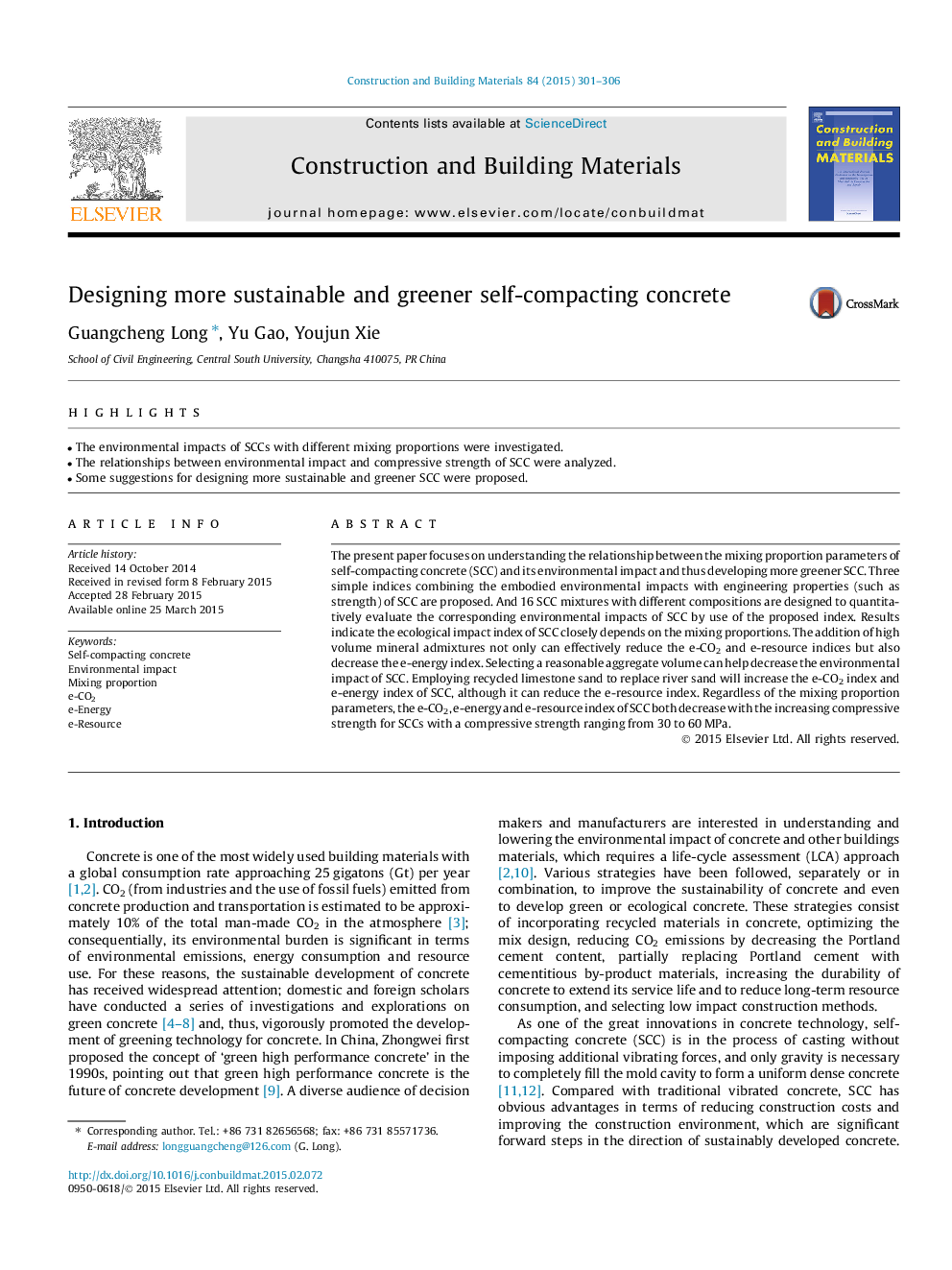| Article ID | Journal | Published Year | Pages | File Type |
|---|---|---|---|---|
| 257066 | Construction and Building Materials | 2015 | 6 Pages |
•The environmental impacts of SCCs with different mixing proportions were investigated.•The relationships between environmental impact and compressive strength of SCC were analyzed.•Some suggestions for designing more sustainable and greener SCC were proposed.
The present paper focuses on understanding the relationship between the mixing proportion parameters of self-compacting concrete (SCC) and its environmental impact and thus developing more greener SCC. Three simple indices combining the embodied environmental impacts with engineering properties (such as strength) of SCC are proposed. And 16 SCC mixtures with different compositions are designed to quantitatively evaluate the corresponding environmental impacts of SCC by use of the proposed index. Results indicate the ecological impact index of SCC closely depends on the mixing proportions. The addition of high volume mineral admixtures not only can effectively reduce the e-CO2 and e-resource indices but also decrease the e-energy index. Selecting a reasonable aggregate volume can help decrease the environmental impact of SCC. Employing recycled limestone sand to replace river sand will increase the e-CO2 index and e-energy index of SCC, although it can reduce the e-resource index. Regardless of the mixing proportion parameters, the e-CO2, e-energy and e-resource index of SCC both decrease with the increasing compressive strength for SCCs with a compressive strength ranging from 30 to 60 MPa.
